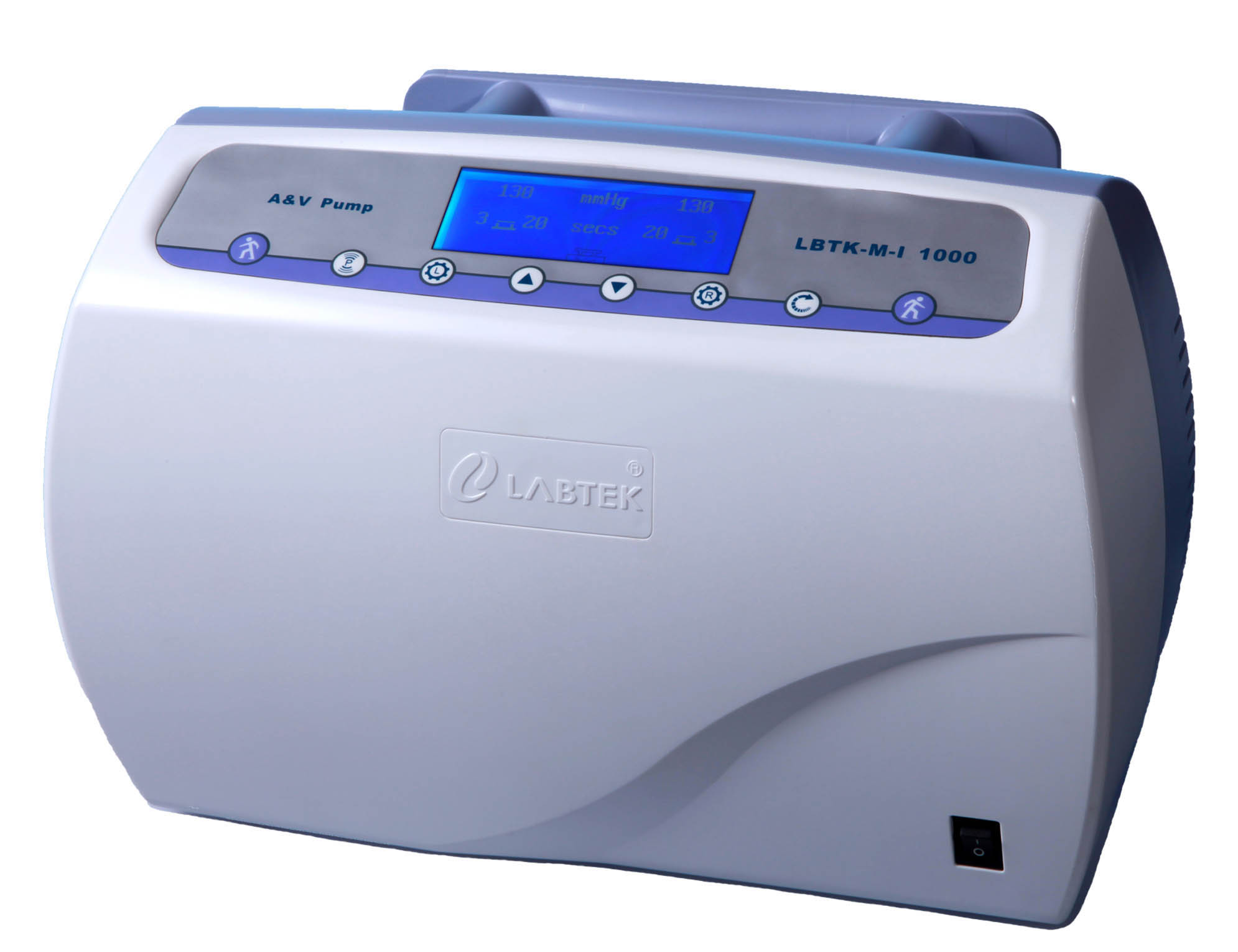-
Home
-
About Us
-
News
-
Venous Foot Pump
Learn moreModern Treatment for Arterial Disease and Prevention of DVT.
The A-V Foot Pump system works with proven Technology. It mimics the natural process of walking with full weight bearing, which significantly improves the venous return as well as the arterial blood supply.
The A-V Foot Pump system is safe, fast and easy to apply. Its implementation in your therapy concept will lead to significant cost savings due to cheaper consumables, faster wound healing and less recurrence of ulcers, providing a better outcome for your patients.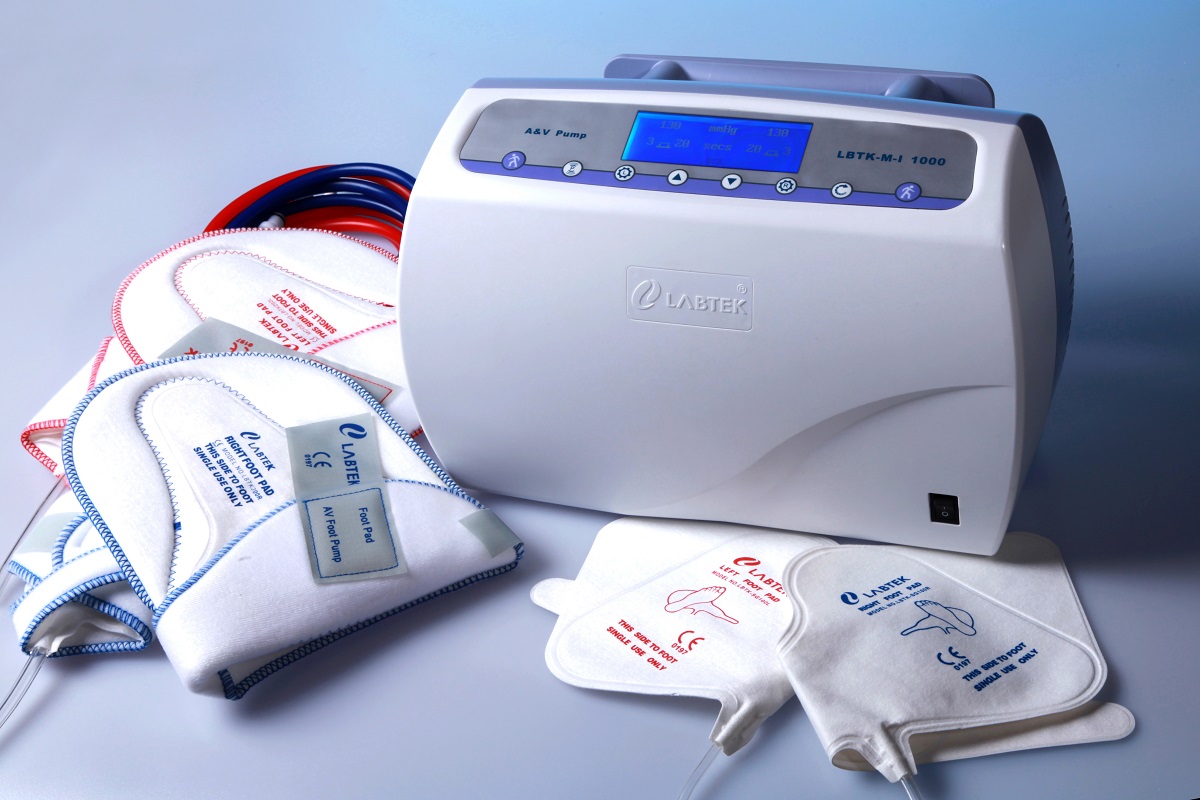
-
IPC/SCD Compression
Learn moreNEW 5 Inch Color LCD DisplayThe Veinoflow SCD NEW 5006 model is the next evolution of SCD Compression. This device features smart compression controls to deliver compression to legs, feet, or both, and to aid in the prevention of venous thromboembolism, deep vein thrombosis, and pulmonary embolisms. It includes a flexible and transportable design, animated alerts with resolution prompts for any error, low noise, ease of cleaning, and a large LCD touch screen display.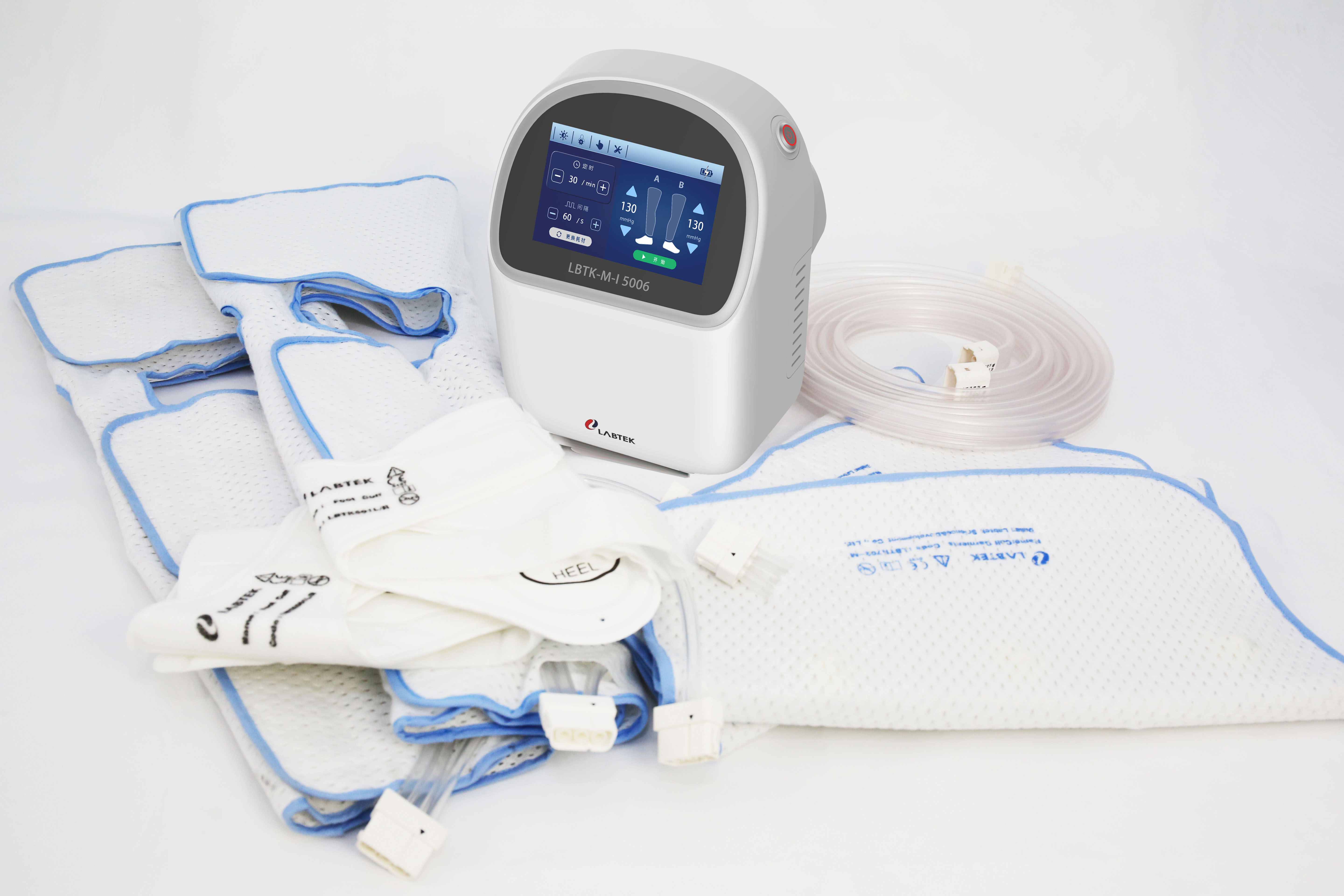 Learn moreThe Veinoflow SCD 5005 is a simpler version of the SCD 5006.The system applies intermittent pneumatic compression to increase venous blood flow — helping prevent deep vein thrombosis and pulmonary embolism in at-risk patients. The compression garment has three bladders to deliver circumferential, sequential and gradient compression to ensure clearance of the deep veins without risking distal blood trapping.
Learn moreThe Veinoflow SCD 5005 is a simpler version of the SCD 5006.The system applies intermittent pneumatic compression to increase venous blood flow — helping prevent deep vein thrombosis and pulmonary embolism in at-risk patients. The compression garment has three bladders to deliver circumferential, sequential and gradient compression to ensure clearance of the deep veins without risking distal blood trapping.
The Veinoflow SCD 5005 features delivery compression to the leg, foot, and both. It flexible and transportable design is ideal to be moved between patient rooms, or between rooms in a house for home use.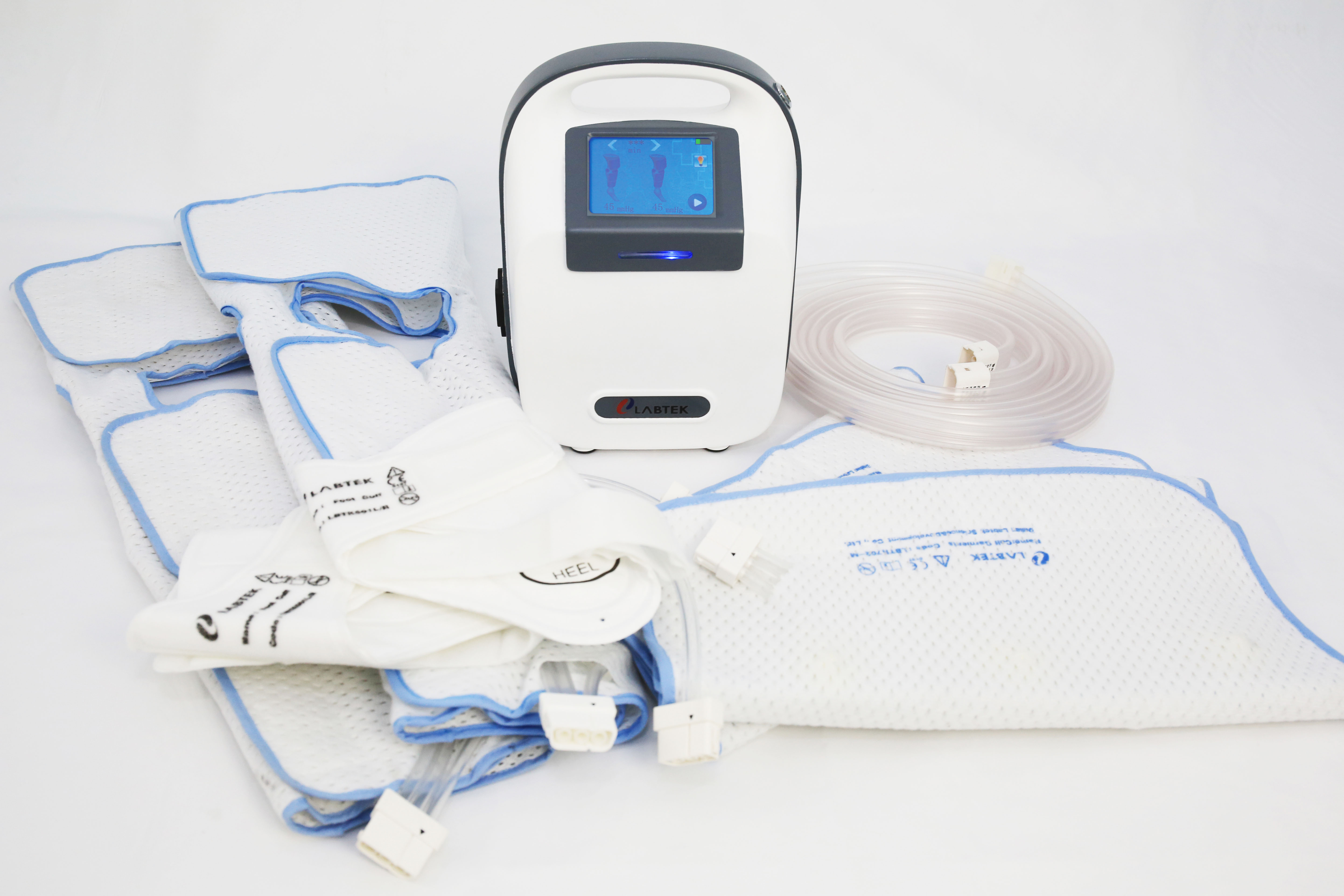 Learn more
Learn moreAdvanced Smart Compression System for VTE Prevention
The Veinoflow SCD LBTK-M-I 5001 is an advanced smart compression system designed to aid in the prevention of Venous Thromboembolism (VTE), including Deep Vein Thrombosis (DVT) and Pulmonary Embolism (PE). This system provides compression therapy for the leg, calf, foot, or both, offering foot-only, leg-only, or combined foot and leg/calf compression to enhance blood circulation and reduce the risk of clot formation.
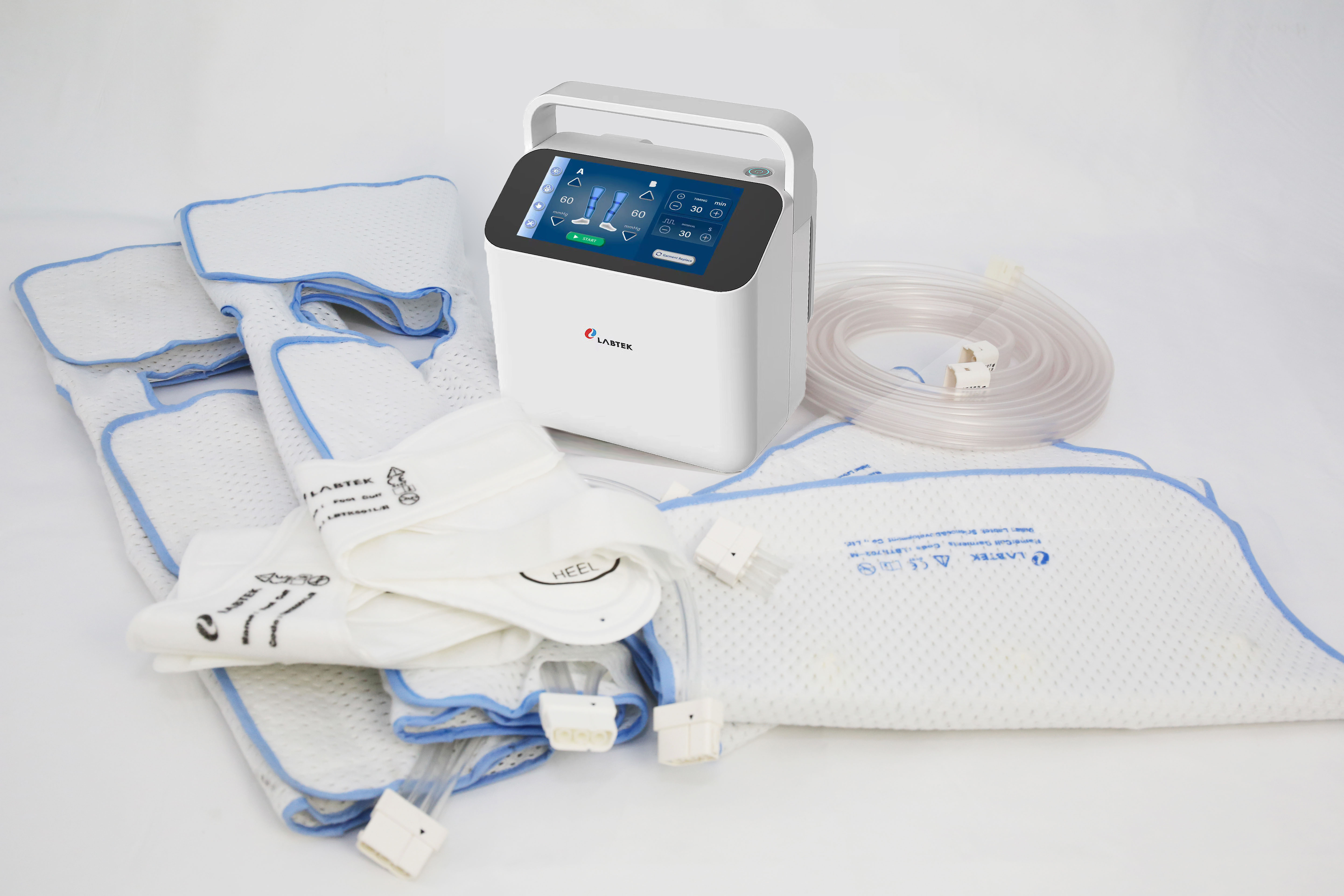 Learn moreSingle-chamber IPC compressionThe Veinoacc SCD is a efficient, non-invasive, mechanical prophylaxis system intended to decrease Deep Vein Thrombosis (DVT) occurrence. It intended to provide compression of the calf and/or thigh and can be used in dual or single leg mode, offering flexibility and selection.
Learn moreSingle-chamber IPC compressionThe Veinoacc SCD is a efficient, non-invasive, mechanical prophylaxis system intended to decrease Deep Vein Thrombosis (DVT) occurrence. It intended to provide compression of the calf and/or thigh and can be used in dual or single leg mode, offering flexibility and selection.
Clear audible and visual alarm indicators ensure that the pump always delivers the right pressure. Lightweight, breathable fabric garments ensure comfort and help prevent the build up of heat and moisture.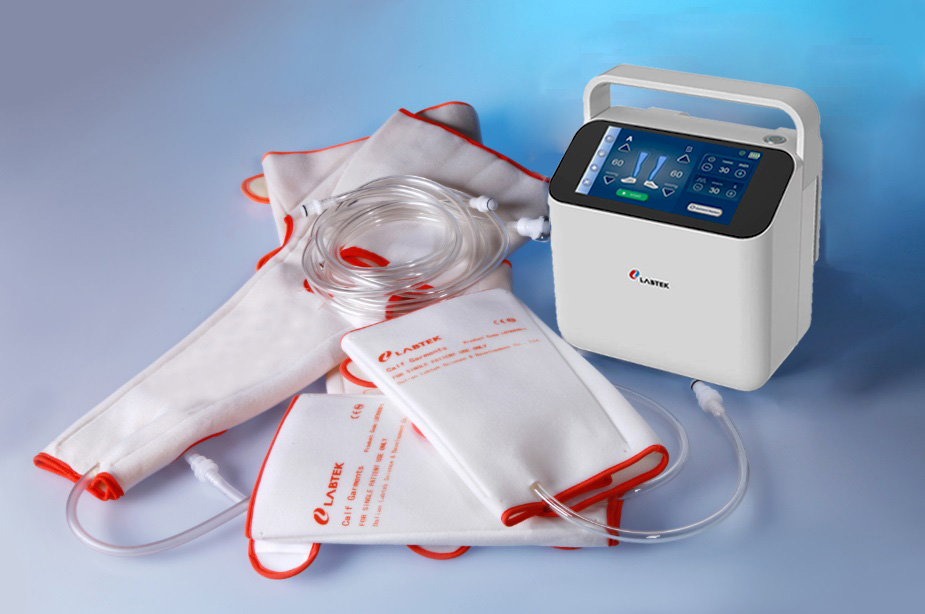
-
Garments
Learn more3 Chambers Non-Woven Sequential Compression GarmentsThe LBTK 500 Non-Woven Sequential Compression Garments are designed with patient comfort and clinical effectiveness in mind. From durable material to a variety of sizes ranging from small to extra-large for placement on the leg, calf or foot, our garments were carefully engineered to support patients with various needs.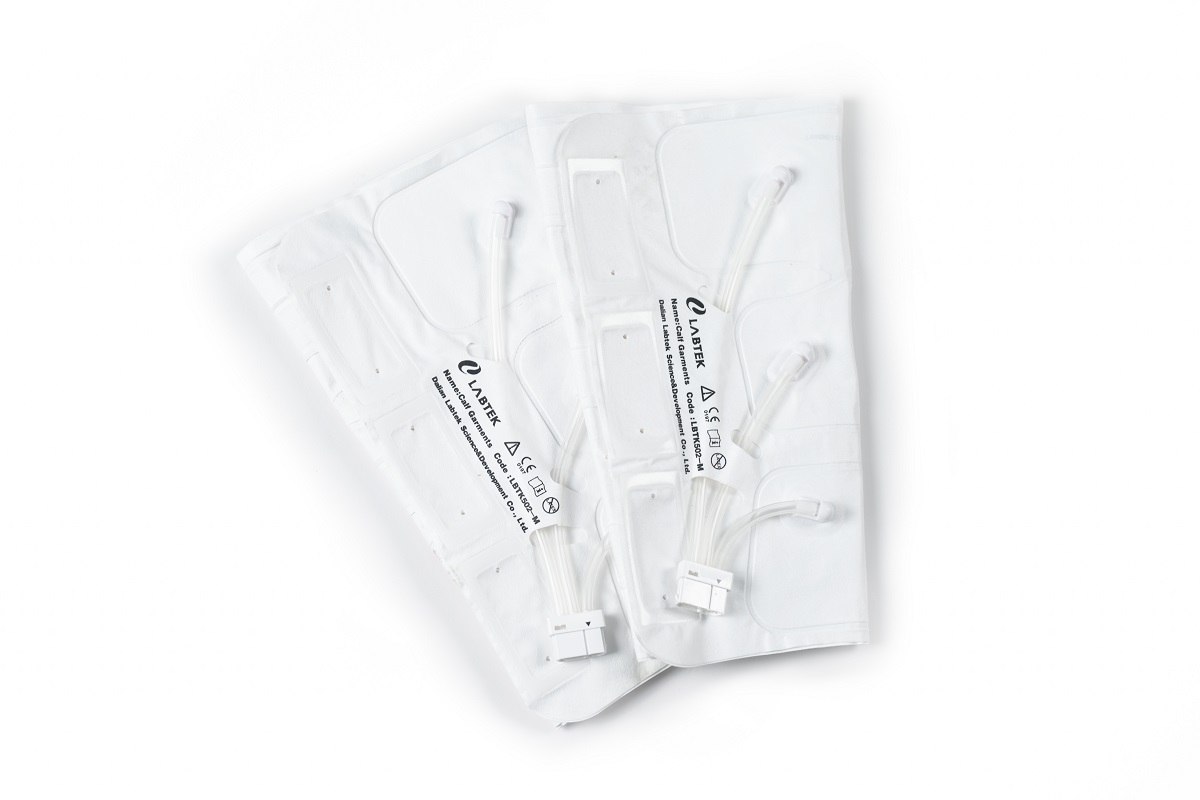 Learn more3 Chambers Soft Sequential Compression GarmentsThe LBTK 700 Soft Sequential Compression Garments are designed to address the issue of sweat and heat. Made from cool and soft material to allowing air circulation on the patient’s skin and minimizing sweat pools, irritation and itchiness, our garments are carefully engineered to improve patient acceptance.
Learn more3 Chambers Soft Sequential Compression GarmentsThe LBTK 700 Soft Sequential Compression Garments are designed to address the issue of sweat and heat. Made from cool and soft material to allowing air circulation on the patient’s skin and minimizing sweat pools, irritation and itchiness, our garments are carefully engineered to improve patient acceptance.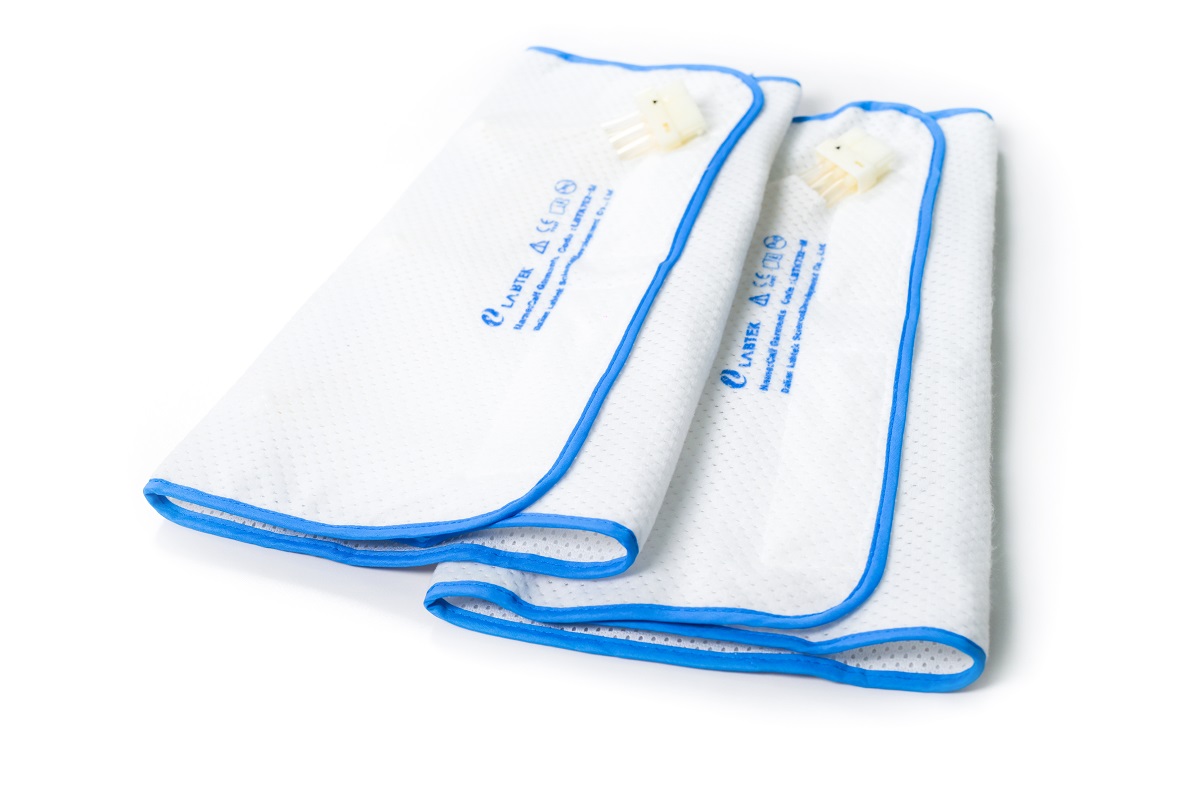 Learn moreSingle-chamber IPC compression garmentsThe LBTK 600 Lightweight, breathable, latex-free compression garments ensure comfort and help prevent the build up of heat and moisture.
Learn moreSingle-chamber IPC compression garmentsThe LBTK 600 Lightweight, breathable, latex-free compression garments ensure comfort and help prevent the build up of heat and moisture.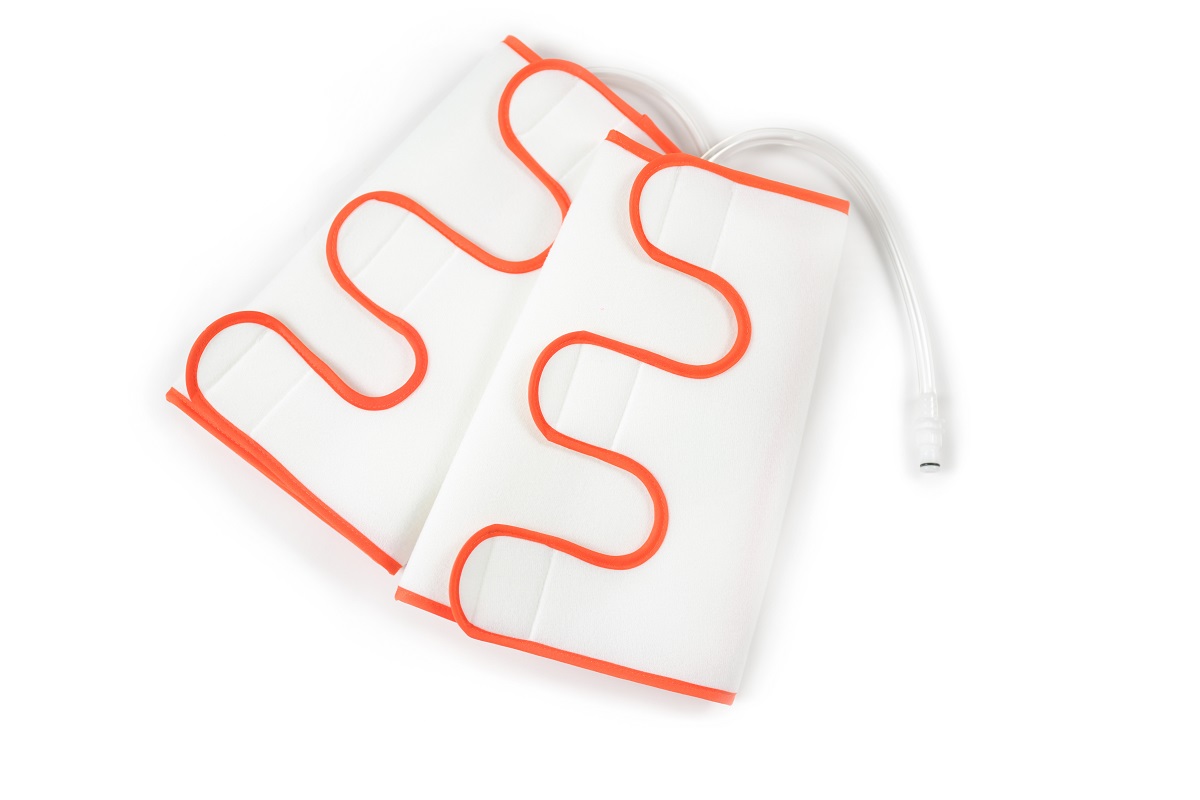 Learn moreFoot Pad’s directs the impulse against the sole of the foot.LBTK 100 Series Foot Pad’s feature a unique rigid sole, helping to contain and direct the impulse to the bottom of the foot. This helps closely mimic the hemodynamic process that occurs when ambulating. Latex free cushioned Foot Pad’s provides cushioning and maximum coverage of the foot surface area to distribute pressure evenly over the foot and minimize trauma to untreated areas. Minimizes pressure points. Comfortable, cost-effective and environmentally friendly!
Learn moreFoot Pad’s directs the impulse against the sole of the foot.LBTK 100 Series Foot Pad’s feature a unique rigid sole, helping to contain and direct the impulse to the bottom of the foot. This helps closely mimic the hemodynamic process that occurs when ambulating. Latex free cushioned Foot Pad’s provides cushioning and maximum coverage of the foot surface area to distribute pressure evenly over the foot and minimize trauma to untreated areas. Minimizes pressure points. Comfortable, cost-effective and environmentally friendly!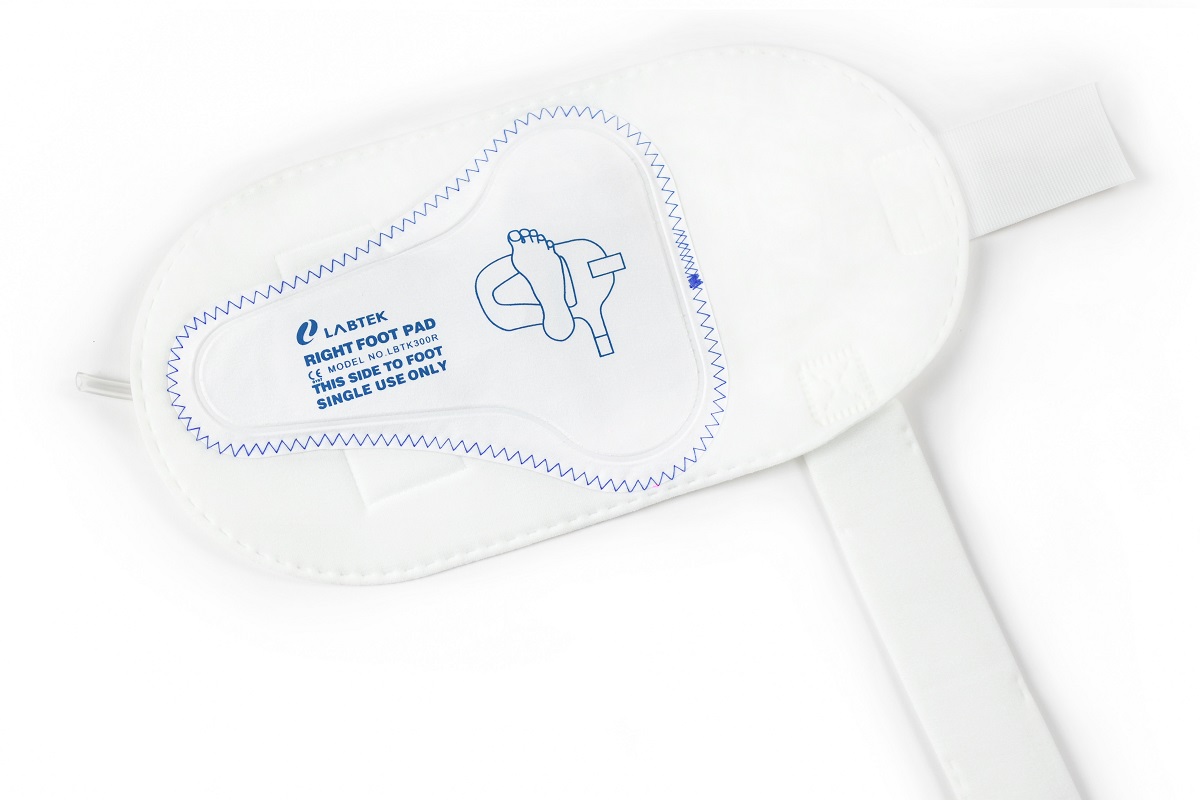
-
VIB Cough-Vest
Learn moreHigh-frequency chest wall oscillation systemThe VIB Cough-Vest airway clearance system is designed to deliver high-frequency chest oscillation to promote airway clearance and improve bronchial drainage. It has been proven to be an effective therapy for a wide range of conditions and when patients use the VIB Cough-Vest system as intended, the changes can be life-transforming. TheVIB Cough-Vest garment’s Velcro like closures, soft touch fabric, and single hose design help simplify your therapy, so you can focus on breathing easier and living better.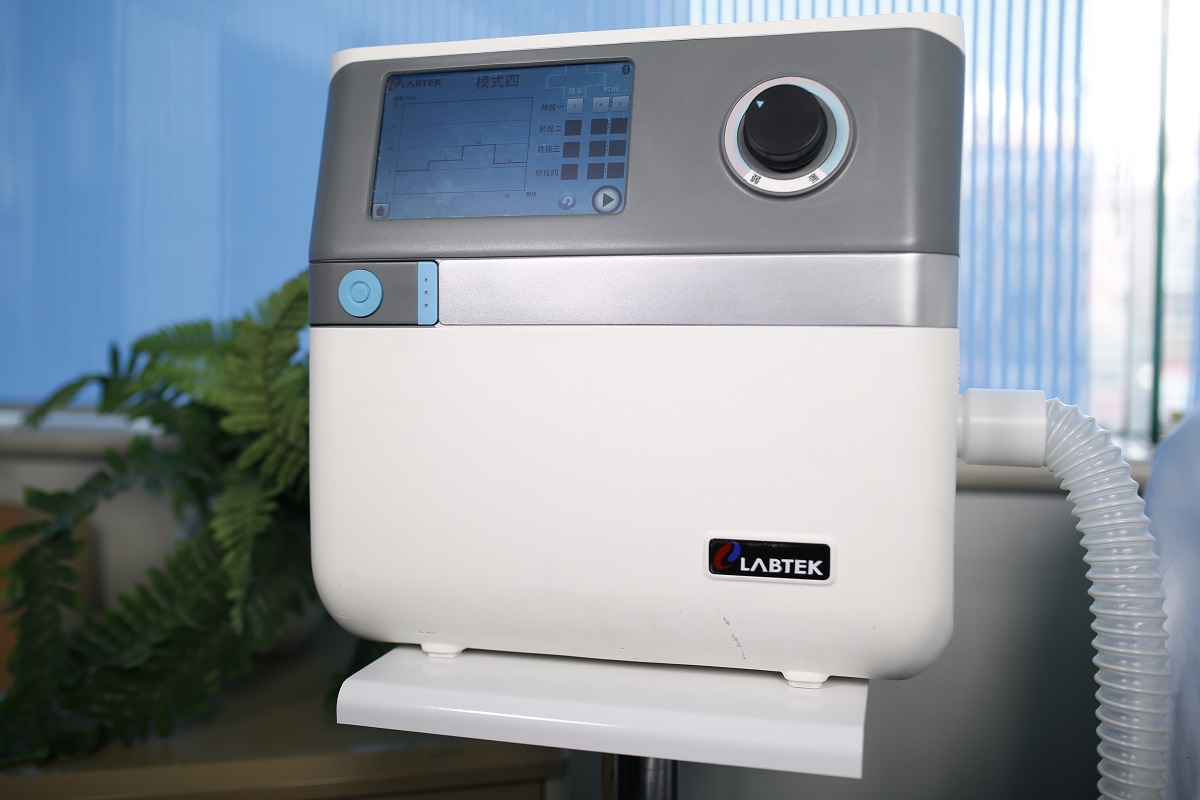
-
FAQs
Learn moreVenous thromboembolism (VTE) is a condition in which a blood clot forms most often in the deep veins of the leg, groin or arm (known as deep vein thrombosis, DVT) and travels in the circulation, lodging in the lungs (known as pulmonary embolism, PE). Together, DVT and PE are known as VTE - a dangerous, potentially deadly medical condition.
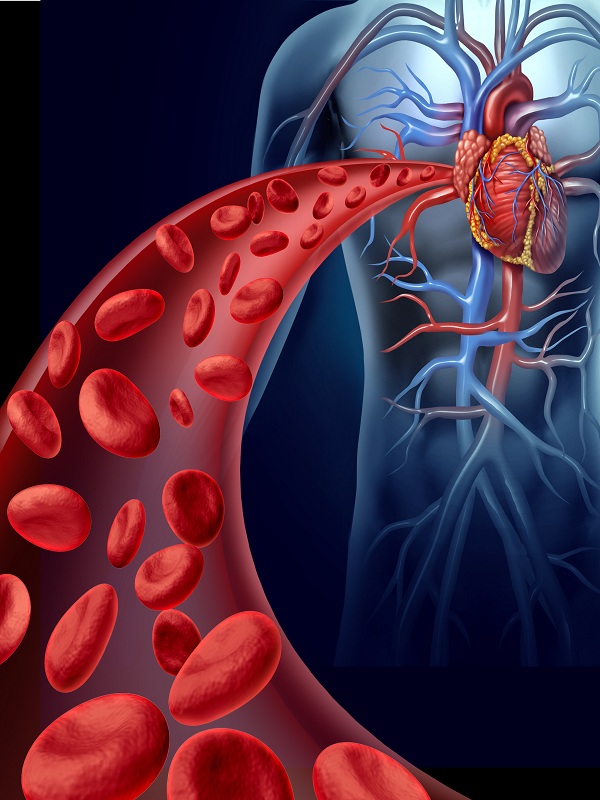 Learn more
Learn moreThe acceleration of blood flow and the frequency of compression are the correct criteria for judging the VTE mechanical prophylaxis efficacy,
not its mere garment size!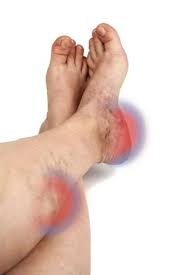 Learn more
Learn moreModern therapy concepts for arterial disease is the key to the successful treatment of related diseases such as chronic wounds and ulcers.
Faster and long-term healing of persistent ulcers.
Significant enhancement of the arterial blood supply.
Active support of the venous function with chronic venous diseases.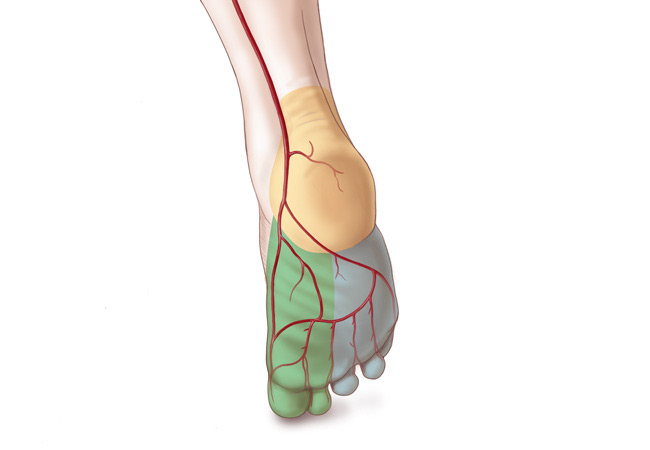 Learn more
Learn moreOur lungs are constantly producing mucus. It is our natural way to keep the lungs clear of infection. In healthy lungs, patients swallow the mucus naturally. When a person is no longer able to effectively clear mucus from their lungs on their own, airway clearance therapy becomes increasingly important to help prevent infection and inflammation.
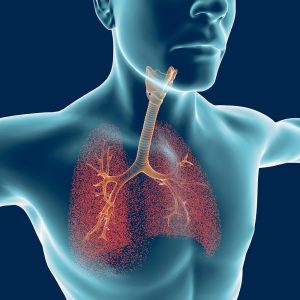
-
Contact Us
LEASO
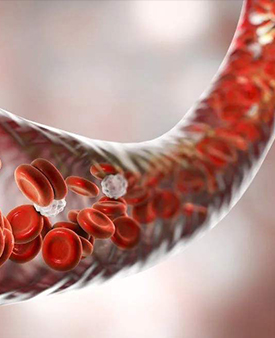
Lower Extremity Arteriosclerosis Obliterans (LEASO)
Arteriosclerosis obliterans is an occlusive arterial disease most prominently affecting the abdominal aorta and the small- and medium-sized arteries of the lower extremities, which may lead to absent dorsalis pedis, posterior tibial and popliteal artery pulses.
Cause
LEASO is common in middle-aged and elderly people, and is often associated with smoking, diabetes, hypertension, hyperlipidemia and other risk factors. The presence and severity are affected by the speed of disease progression, the number of collateral circulations and individual tolerance. Symptoms generally develop gradually from mild to severe, but acute thrombosis on the basis of arteriosclerosis obliterans can lead to sudden aggravation of symptoms.
Symptoms
At early stage there might be no obvious symptoms, or only slight discomfort, such as cold, numbness etc. After that, intermittent claudication gradually will appear, which is the characteristic symptom of LEASO. After walking for a certain distance, patients will feel fatigue and pain and has to take a rest. When the disease develops, there will be rest pain. Finally, ulcers and gangrene can occur in the limbs.
Recommended products
- About
- Who We Are
- Venous Foot Pump
- A-V Foot Pump LBTK-M-I 1000
- IPC/SCD Compression
- Veinoflow SCD LBTK-M-I 5006
- Veinoflow SCD LBTK-M-I 5005
- Veinoflow SCD LBTK-M-I 5001
- Veinoacc SCD LBTK-M-I 5004
- VIB Cough-Vest
- VIB Cough-Vest LBTK-K-I 2000 (HFCWO)
- FAQs
- What is Venous Thromboembolism?
- How to select the best VTE Pump?
- Modern Treatment for Arterial Disease
- What is Airway Clearance?
- Contact
- Contact Us

